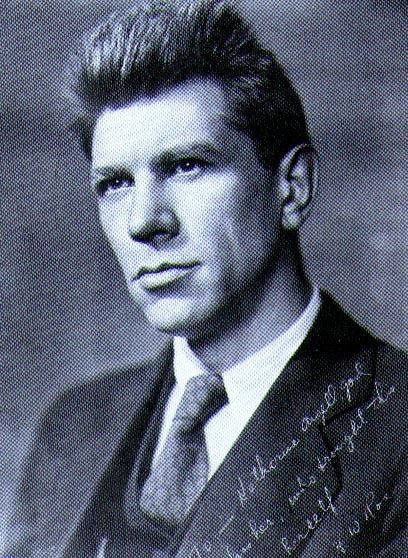Occupation Publisher Books Letters from the editor Role Journalist | Name Harold Ross Religion Presbyterian Awards Peabody Award | |
 | ||
Died December 6, 1951, Boston, Massachusetts, United States | ||
Harold ross sculpting with light photography
Harold Wallace Ross (November 6, 1892 – December 6, 1951) was an American journalist who co-founded The New Yorker magazine in 1925 and served as editor-in-chief of the publication from its inception until his death.
Contents
- Harold ross sculpting with light photography
- Peace has come hillsong worship arr harold ross
- Early life
- The New Yorker
- Death
- References

Peace has come hillsong worship arr harold ross
Early life

Born in Aspen, Colorado, Ross was the son of Scots-Irish immigrant George Ross and schoolteacher Ida (Martin) Ross. When he was eight, the family left Aspen because of the collapse in the price of silver, moving to Redcliff and Silverton, Colorado, then to Salt Lake City, Utah. In Utah, he worked on the high school paper (The West High Red & Black) and was a stringer for The Salt Lake Tribune, the city's leading daily newspaper. The young Ross had journalism in the blood. He dropped out of school at thirteen and ran away to his uncle in Denver, where he worked for The Denver Post. Though he returned to his family, he did not return to school, instead getting a job at the Salt Lake Telegram, a smaller afternoon daily newspaper.

By the time he was twenty-five he had worked for at least seven different papers, including the Marysville, California Appeal; the Sacramento Union; the Panama Star and Herald; the New Orleans Item; the Atlanta Journal, the Hudson Observer in Hoboken, New Jersey; the Brooklyn Eagle; and the San Francisco Call.

In Atlanta, he covered the murder trial of Leo Frank, one of the "trials of the century."

In World War I, he enlisted in the U.S. Army Eighteenth Engineers Railway Regiment. In France, he edited the regimental journal and went to Paris to work for the Stars and Stripes, serving from February 1918 to April 1919. He was said to have walked 150 miles to reach Paris to write for Stars and Stripes, where he met Alexander Woollcott, Cyrus Baldridge, Franklin Pierce Adams, and Jane Grant, who would become his first wife and helped back The New Yorker.
After the war, he returned to New York City and assumed the editorship of a magazine for veterans, The Home Sector. It folded in 1920 and was absorbed by the American Legion Weekly. He then spent a few months at Judge, a humor magazine.
The New Yorker
It was while editing these magazines that Ross envisioned a new journal of metropolitan sensibilities and a sophisticated tone. This would be The New Yorker. The first issue was dated February 21, 1925. It was a partnership between Ross and yeast heir Raoul Fleischmann; they established the F-R Publishing Company to publish it.
Ross was one of the original members of the Algonquin Round Table. He used his contacts in "The Vicious Circle" to help get The New Yorker started.
Ross, said by Woollcott to resemble "a dishonest Abe Lincoln," attracted talent to his new publishing venture, featuring writers such as James Thurber, E. B. White, John McNulty, Joseph Mitchell, Katharine S. White, S. J. Perelman, Janet Flanner ("Genet"), Wolcott Gibbs, Alexander Woollcott, St. Clair McKelway, John O'Hara, Robert Benchley, Dorothy Parker, Vladimir Nabokov, and J.D. Salinger.
The original prospectus for the magazine read, "The New Yorker will be the magazine which is not edited for the old lady in Dubuque." Thurber noted the prospectus does not read or sound like Ross, summarizing Ross's goals so:
[Casuals] was Ross's word for fiction and humorous pieces of all kinds... [it] indicated Ross's determination to give the magazine an offhand, chatty, informal quality. Nothing was to be labored or studied, arty, literary, or intellectual.Ross forbade sex as a subject, checking all art and articles for off-color jokes or double entendre, and rejected advertisements thought unsuitable. Ross disliked fatalistic pieces and sought to minimize "social-conscious stuff," calling all such articles "grim."
Ross worked long hours and ruined all three of his marriages as a result. He was a careful and conscientious editor who strove to keep his copy clear and concise. One famous query to his writers was "Who he?" Ross believed the only two people everyone in the English-speaking world was familiar with were Harry Houdini and Sherlock Holmes. He was notorious for overusing commas. Very aware of his limited education, Ross treated Fowler's Modern English Usage as his bible. He edited every issue of the magazine from the first until his death—a total of 1,399 issues. Ross designated William Shawn as his preferred successor, and Fleischmann confirmed Shawn as the new managing editor after Ross died.
James Thurber quotes the reminiscences of many mutual colleagues in his posthumous memoir, The Years with Ross, citing his former chief's pranks, temper, profanity, anti-intellectualism, drive, perfectionism, and an almost permanent social discomfort, and how these all shaped The New Yorker staff. Ross and his magazine slowly became famous among literati and newspapermen. Thurber quoted John Duncan Miller, the Washington, D.C. correspondent for The Times of London, after meeting Ross in 1938:
During the first half hour, I felt that Ross was the last man in the world who could edit the New Yorker. I left there realizing that nobody else in the world could.He kept up a voluminous correspondence, which is preserved at the New York Public Library.
Death
Ross died in Boston, Massachusetts, during an operation to remove a lung after it was discovered his bronchial carcinoma had metastasized. He died of heart failure during the operation.
